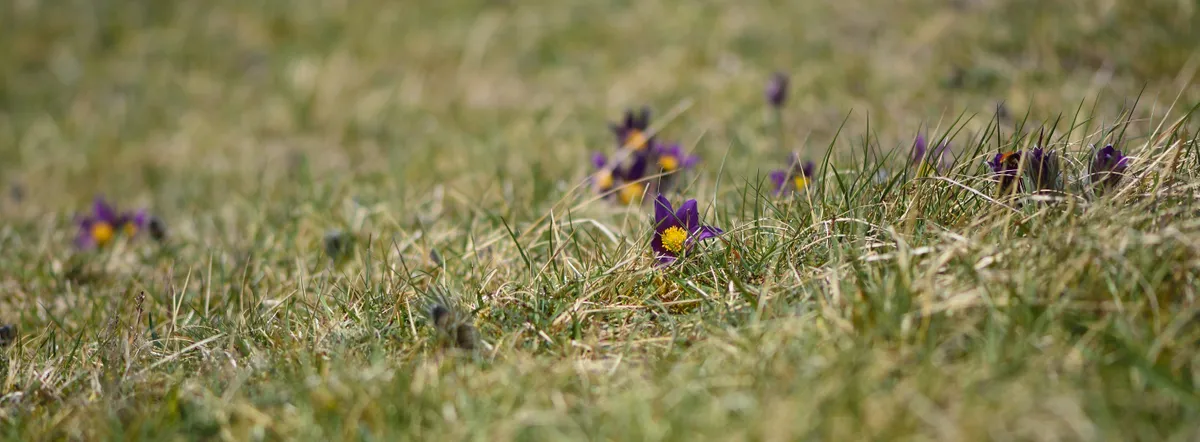Listed as Near Threatened on the IUCN Red List, pasqueflowers Pulsatilla vulgaris are restricted in the UK to a few chalk and limestone grasslands.
They are member of the buttercup family, Ranunculaceae, and have large bell-shaped purple flowers with golden stamens and feathery leaves, and grow up to 25cm.

They are classified as Vulnerable in the Great Britain Vascular Plant Red List and the England Vascular Plant Red List.
Pasqueflowers usually flower in April, but can be seen in late March during warm springs, and can last until into May. They are associated with Easter, with "Pasque" meaning "like Paschal" of Easter, and are sometimes known as the 'anemone of Passiontide."

Because pasqueflowers are often seen on old barrow and boundary banks, legend has it that the flower only grows in places which were soaked by the blood of Romans or Danes. One of its alternative names is Dane's Blood (this name is sometimes used for other plants).
1
Barton Hills, Chilterns, Bedfordshire
This National Nature Reserve is completely open to the public and varies from chalk grassland to beech woodland meaning that there is a large variety of wildlife. In addition to being able to see the pasque flower here other rare wildflowers include greater pignut and the field fleawort.
2
Knocking Hoe Nature Reserve, Bedfordshire
A chalk grassland in the north end of the Chilterns, Knocking Hoe is a National Nature Reserve known for several nationally rare plants including pasqueflowers, burnt tip orchids, and moon carrot.
3
Barnsley Warren, Cotswolds, Gloucestershire

Considered one of the main strongholds of the pasque flower in the UK, Barnsley Warren has a dedicated reserve to it. Flowering through April it boasts some 20,000 plants and along with many other flowering species populated by butterflies.
4
Therfield Heath and Fox Covert, Hertfordshire


Up to 60,000 plants come into flower on Therfield Heath, a Site of Special Scientific Interest and home to a range of wildlife including chalkhill blue butterflies, skylarks, and grey partridges.
Pasqueflowers were chosen as Hertfordshire's county flower.
Sloping chalk grassland with a variety of rare wildlife, including Adonis blue and grizzled skipper butterflies, pasqueflowers and orchids such as bee, pyramidal, common spotted and monkey. A hybrid of monkey and lady orchids was recorded in 2006, the only place in the UK where this hybrid has been found.
